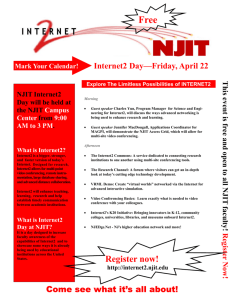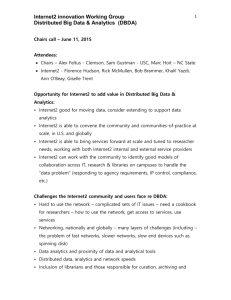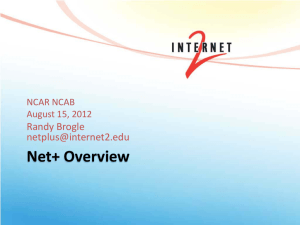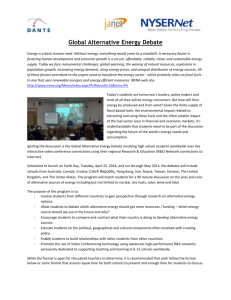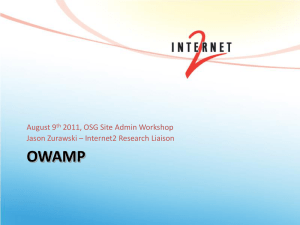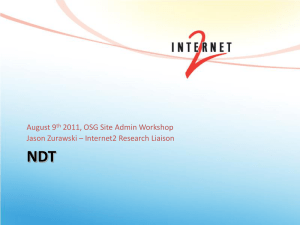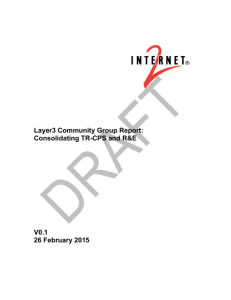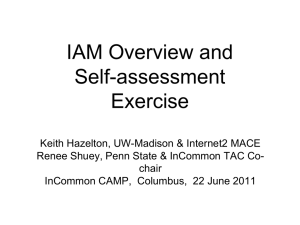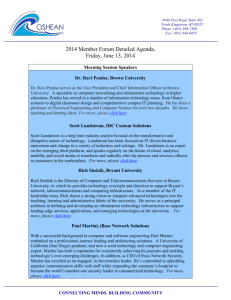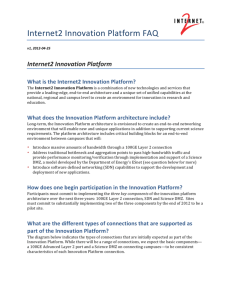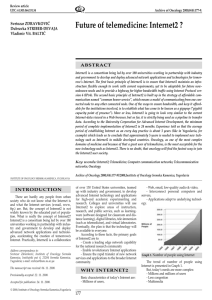Frequently Asked Questions about Internet2
advertisement
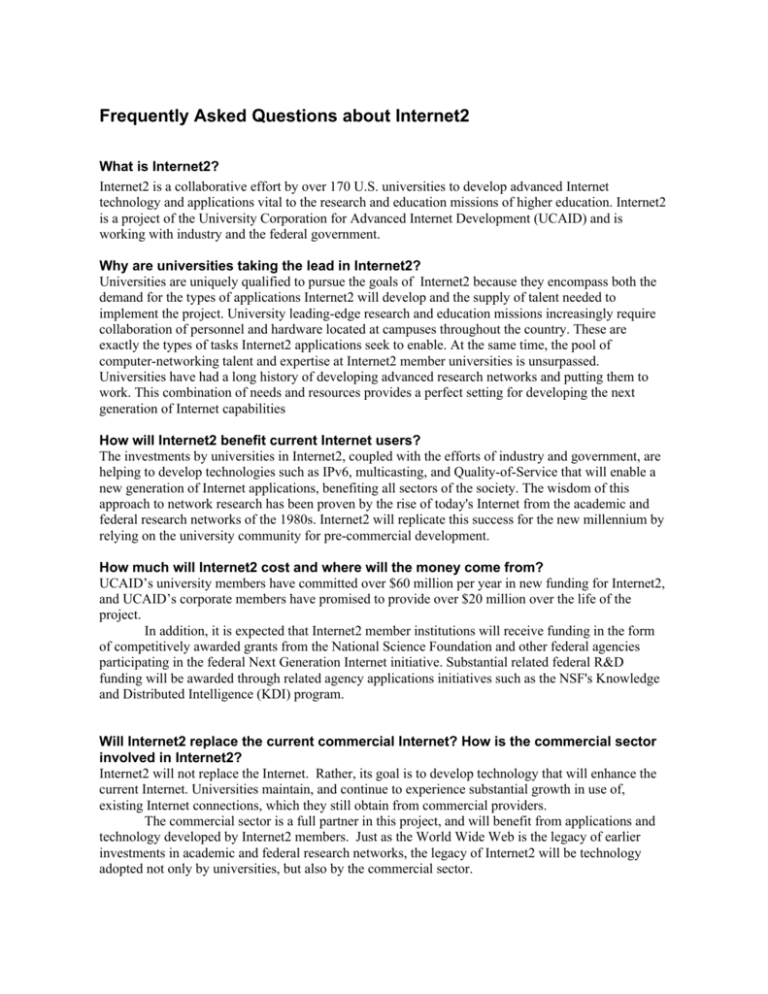
Frequently Asked Questions about Internet2 What is Internet2? Internet2 is a collaborative effort by over 170 U.S. universities to develop advanced Internet technology and applications vital to the research and education missions of higher education. Internet2 is a project of the University Corporation for Advanced Internet Development (UCAID) and is working with industry and the federal government. Why are universities taking the lead in Internet2? Universities are uniquely qualified to pursue the goals of Internet2 because they encompass both the demand for the types of applications Internet2 will develop and the supply of talent needed to implement the project. University leading-edge research and education missions increasingly require collaboration of personnel and hardware located at campuses throughout the country. These are exactly the types of tasks Internet2 applications seek to enable. At the same time, the pool of computer-networking talent and expertise at Internet2 member universities is unsurpassed. Universities have had a long history of developing advanced research networks and putting them to work. This combination of needs and resources provides a perfect setting for developing the next generation of Internet capabilities How will Internet2 benefit current Internet users? The investments by universities in Internet2, coupled with the efforts of industry and government, are helping to develop technologies such as IPv6, multicasting, and Quality-of-Service that will enable a new generation of Internet applications, benefiting all sectors of the society. The wisdom of this approach to network research has been proven by the rise of today's Internet from the academic and federal research networks of the 1980s. Internet2 will replicate this success for the new millennium by relying on the university community for pre-commercial development. How much will Internet2 cost and where will the money come from? UCAID’s university members have committed over $60 million per year in new funding for Internet2, and UCAID’s corporate members have promised to provide over $20 million over the life of the project. In addition, it is expected that Internet2 member institutions will receive funding in the form of competitively awarded grants from the National Science Foundation and other federal agencies participating in the federal Next Generation Internet initiative. Substantial related federal R&D funding will be awarded through related agency applications initiatives such as the NSF's Knowledge and Distributed Intelligence (KDI) program. Will Internet2 replace the current commercial Internet? How is the commercial sector involved in Internet2? Internet2 will not replace the Internet. Rather, its goal is to develop technology that will enhance the current Internet. Universities maintain, and continue to experience substantial growth in use of, existing Internet connections, which they still obtain from commercial providers. The commercial sector is a full partner in this project, and will benefit from applications and technology developed by Internet2 members. Just as the World Wide Web is the legacy of earlier investments in academic and federal research networks, the legacy of Internet2 will be technology adopted not only by universities, but also by the commercial sector. What is the relationship between the Next Generation Internet (NGI) and Internet2? The university-led Internet2 effort and the federally-led NGI initiative are working together in many areas. For example, the Internet2 program is already in partnership with the National Science Foundation's (NSF) merit-based High Performance Connections program. Over 90 Internet2 institutions have already received competitively awarded grants to connect to high-performance backbone networks such as the very high performance Backbone Network Service (vBNS) developed by the NSF and MCI and the Abilene network developed by UCAID and its partners. Additional cooperative relationships are being planned as part of NGI implementation. As Internet2 develops among university members, and NGI programs go forward at federal agencies, it will be important to ensure advanced network services are available on interoperable backbone networks that are competitively provided by many vendors. What about existing federal networks other than the vBNS? Internet2 functions in the larger context of existing national research and development networks. For example, mission networks run by federal agencies, such as NASA and the Department of Energy, are important elements of the NGI initiative. Internet2 will complement and enhance the NGI initiative, and collaborate, cooperate, and join with it wherever possible. For example, Internet2 is participating in the NGI Joint Engineering Team (JET), which is coordinating the development of federal agency advanced networks. What are some of Internet2's longer range goals? A key goal of this effort is to accelerate the technology transfer necessary to move the appropriate technologies into the commercial sector -- thus creating the basis of a next generation network that will continue United States' leadership in this important area. Internet2 will also share its discoveries with others in the educational community -- K-12, libraries and other institutions. Internet2 is developing structures to share its experience and expertise with others in the education community and beyond. This is the approach that characterized the first Internet and it can work again today. What about educational institutions that are not Internet2 members? Internet2 participation is open to any university that commits to providing on-campus facilities that will allow advanced applications development on its campus. The financial investment required to meet these obligations may be more than many institutions can manage right now. However, Internet2 intends to rapidly transfer the developments to the broader networking community. The cost of technology used and developed by Internet2 will drop within the reach of any institution that currently has a commodity Internet connection. Fifteen years ago, connecting to the Internet was frequently as expensive as participating in Internet2 is today. As the technology dropped in price, the efforts of the initial participants in network research spread out to reach the entire academic community. Deployment of Internet2 technology will follow a similar pattern. How will Internet2 duplicate the success of today's Internet? Over the past decade, federal government R&D agencies, the university community, and private companies have worked together to develop many of today's Internet technologies. That partnership created a multi-billion dollar industry. By renewing this partnership, Internet2 will develop and implement new technology needed by all network users, ensuring continued U.S. leadership in the application of computers and communications.
